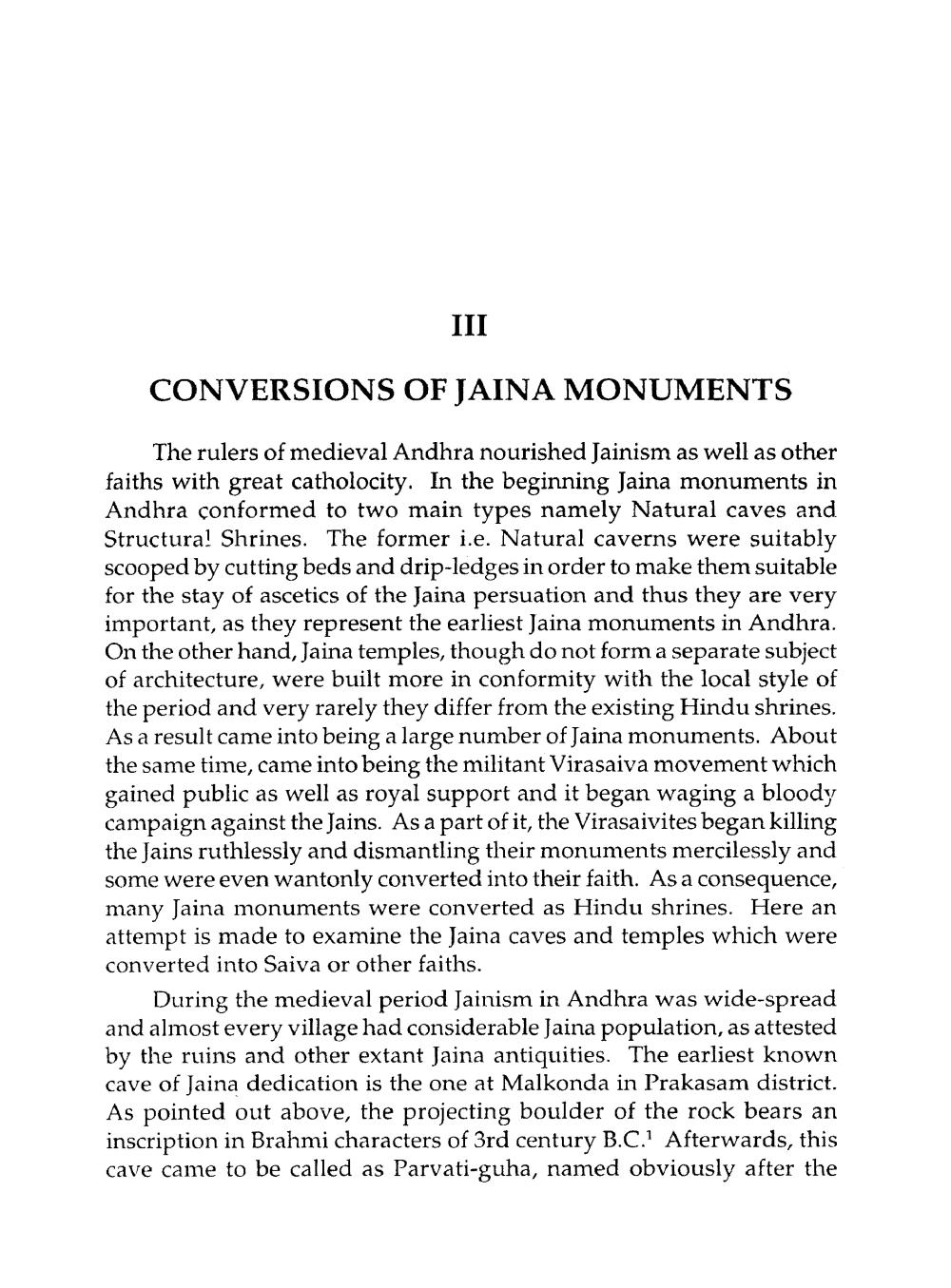________________
III
CONVERSIONS OF JAINA MONUMENTS
The rulers of medieval Andhra nourished Jainism as well as other faiths with great catholocity. In the beginning Jaina monuments in Andhra çonformed to two main types namely Natural caves and Structura! Shrines. The former i.e. Natural caverns were suitably scooped by cutting beds and drip-ledges in order to make them suitable for the stay of ascetics of the Jaina persuation and thus they are very important, as they represent the earliest Jaina monuments in Andhra. On the other hand, Jaina temples, though do not form a separate subject of architecture, were built more in conformity with the local style of the period and very rarely they differ from the existing Hindu shrines. As a result came into being a large number of Jaina monuments. About the same time, came into being the militant Virasaiva movement which gained public as well as royal support and it began waging a bloody campaign against the Jains. As a part of it, the Virasaivites began killing the Jains ruthlessly and dismantling their monuments mercilessly and some were even wantonly converted into their faith. As a consequence, many Jaina monuments were converted as Hindu shrines. Here an attempt is made to examine the Jaina caves and temples which were converted into Saiva or other faiths.
During the medieval period Jainism in Andhra was wide-spread and almost every village had considerable Jaina population, as attested by the ruins and other extant Jaina antiquities. The earliest known cave of Jaina dedication is the one at Malkonda in Prakasam district. As pointed out above, the projecting boulder of the rock bears an inscription in Brahmi characters of 3rd century B.C.' Afterwards, this cave came to be called as Parvati-guha, named obviously after the




